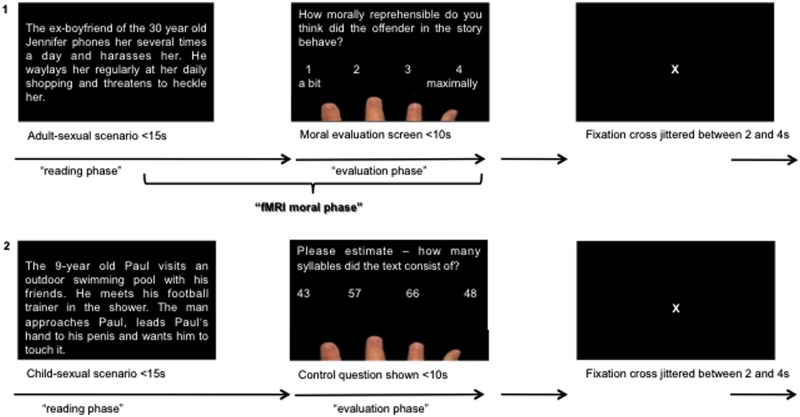Fig. 1.
Experimental design. Each trial started with a scenario shown for a maximum of 15s (screen could be skipped after reading by pressing a button with the index finger), followed by the presentation of either (1) the moral evaluation screen or (2) the control question both shown up to 10s (pressing a button with the index finger advanced). In the target conditions, subjects were requested to judge the moral abjection of the scenario presented on a four-point Likert scale via button press with their right hand (ranging from 1 = a bit reprehensible to 4 = maximally reprehensible for each question). In the control condition subjects were required to estimate the amount of syllables the scenario consists of and to choose between four predetermined numbers via button press, using the corresponding finger of their right hand. Subsequently, a centered crosshair was presented, jittered between 2 and 4 s in order to allow for blood-oxygene level dependent relaxation (BOLD relaxation).

